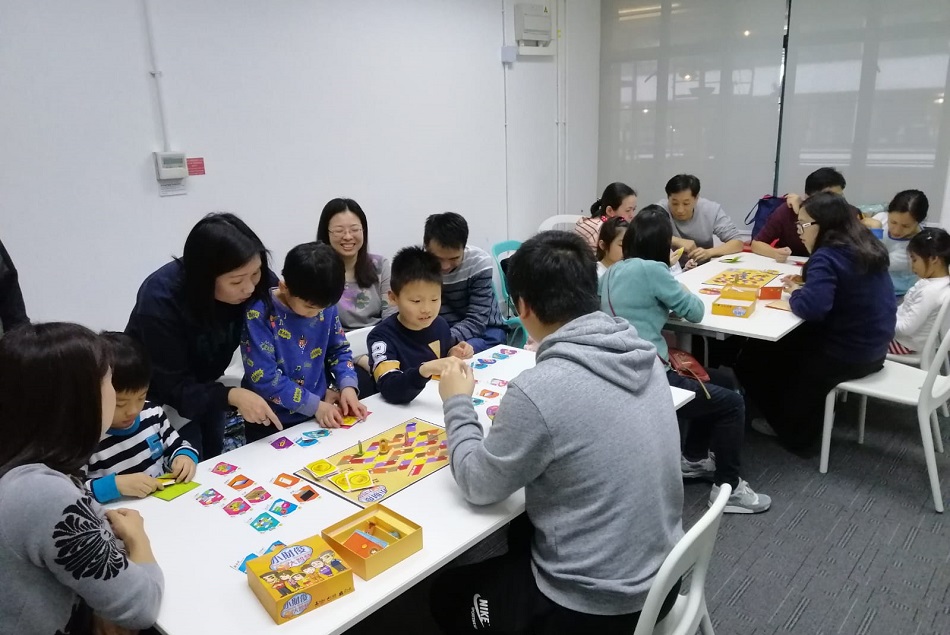Leisure & Culture #72
From Seed to Cup: Growing Coffee in Hong Kong
Seed To Cup HK
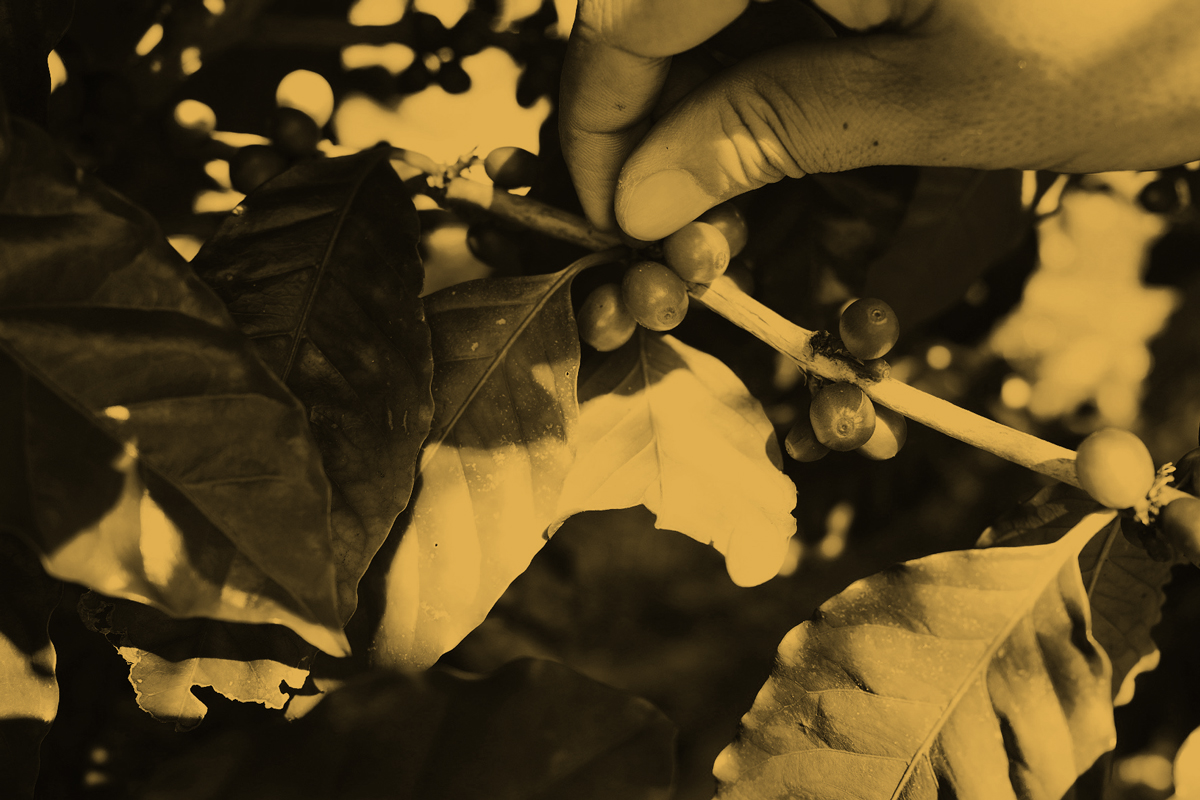
Written by Kit Chan
Translated by Venus
Photos by Kit Chan
Mike still remembers his first sip of locally grown coffee, brewed with beans from the New Territories. "The taste was so bland, it wasn't good at all."
The coffee beans were harvested and washed in a local farm, roasted in the simplest way and brewed just for visitors to share. Everyone appreciated the amateur effort, though the taste had much room for improvement -- yet the experience kept bubbling in Mike's mind.
Today, Mike is the founder of "Seed to Cup", a newbie farmer trying to grow coffee beans in Hong Kong. Just a few years ago, Mike had no idea he would own a coffee field, going on the crusade of promoting local beans.
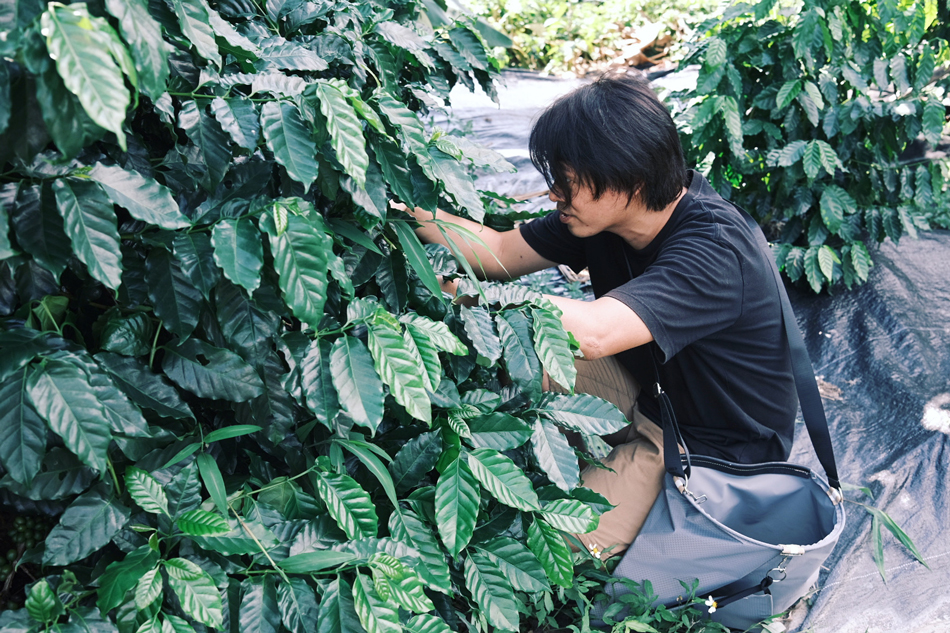
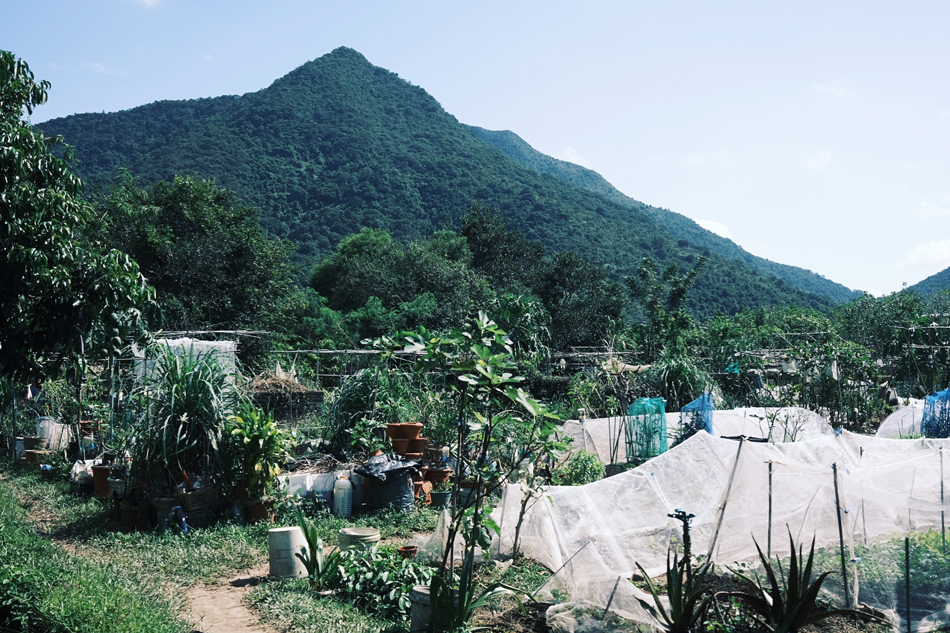
Mike's field can be found in O-Farm, Fanling, where the first pair of coffee seedlings were planted and cared by O-Farm's owner Tsz Shing Yip since 2002. Their number multiplied over the years, and there are now 20 coffeas in the field.
Under the scorching sun, we walked towards the cool shade of this little coffee forest; as the leaves danced away in a breeze, a bunch of coffee beans popped up, mostly green, with a couple of red ones in between.
"The bright red ones are cherries, ripened to pick." Mike picked one off the shrub and passed it to me. "Try one."
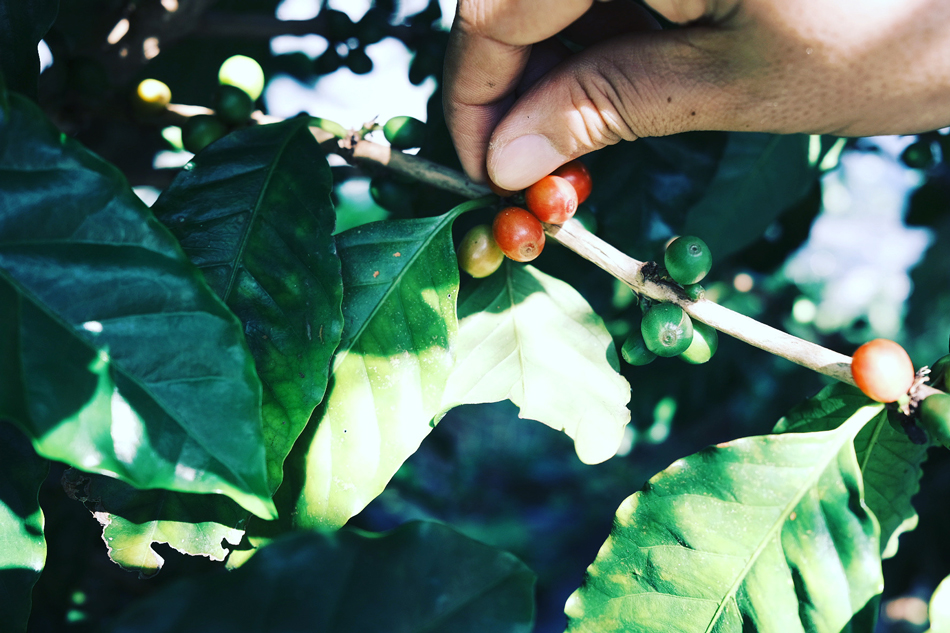
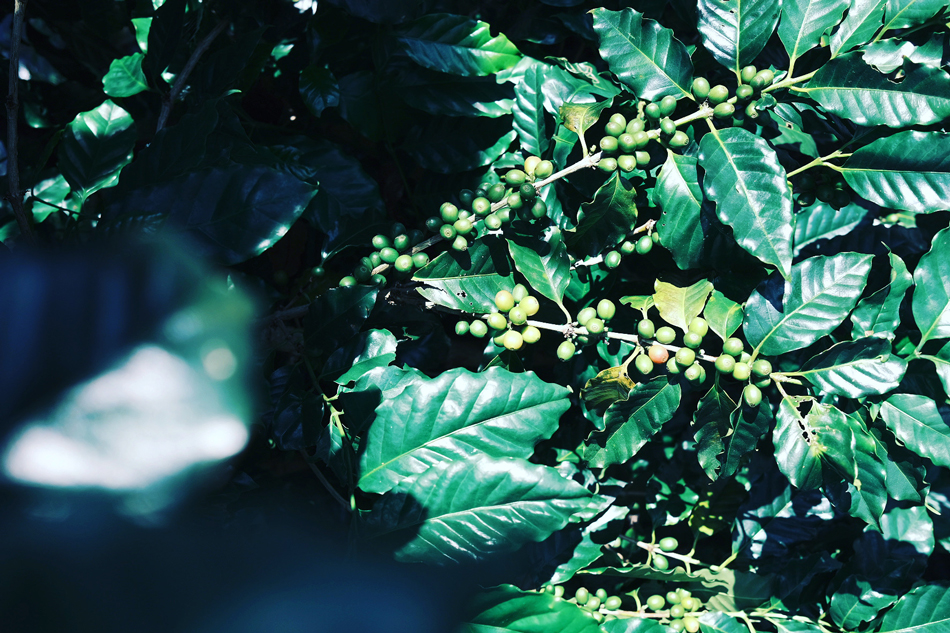
Never had I tasted coffee like this, literally fresh from the field. As I peeled off its skin and sucked the fruit in my mouth, it was surprisingly refreshing, sweet, slimy and juicy, with a taste and texture similar to pomegranate. It turned my perception about coffee upside down.
Originally from Brazil, these are known as Caturra, meaning "small" in native Guarani tribe language. You can spot a Caturra right away with its distinct, wavy leaves, looking nice and shiny from afar. Short and sturdy, its branches are closely spaced and fruitful; with a high productivity and superb flavor, it is one of the most common coffee beans in the market.
Mike's farm follows the latest trend of " shade-grown coffee shaded coffee", which means growing coffee under the shades of larger taller trees, a more forest-friendly approach than cutting trees down for farm space. However, Mike had a different reason to grow water banyans on the side, "that is to shade and cool off the Caturras from the excruciating sunlight".
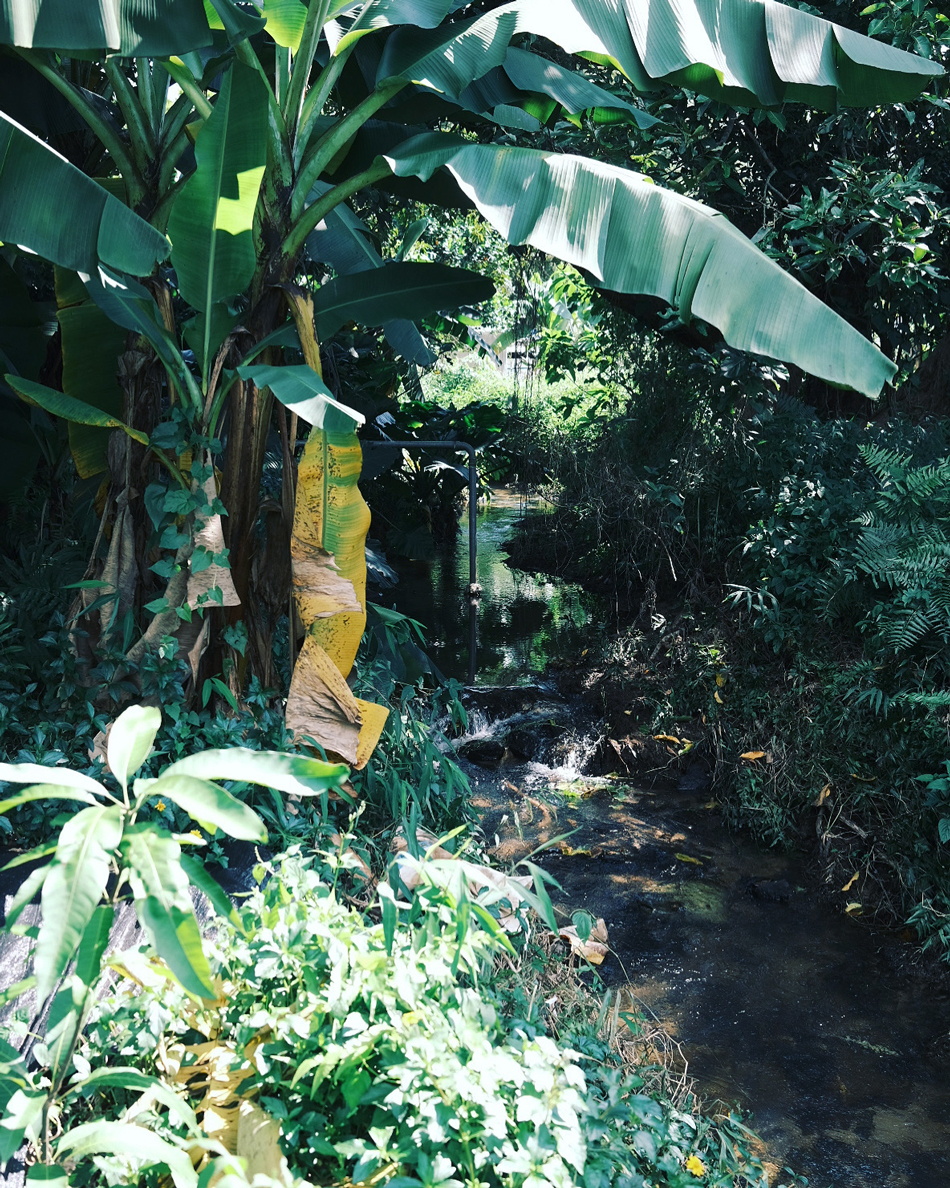
Banana trees are also planted around the farm, to keep the field at the ideal cool temperature of 10°C to 20°C , protecting younger coffee plants; as the field is close to a creek, the high humidity makes it perfect for Caturra to flourish.
The farm cultivates its own seedlings, and each takes three to five years from planting to fruition. White, little coffee flowers generally bloom in April, bear fruit in summer that are ready to harvest in September; the busiest time of coffee picking would go on from November till January next year.
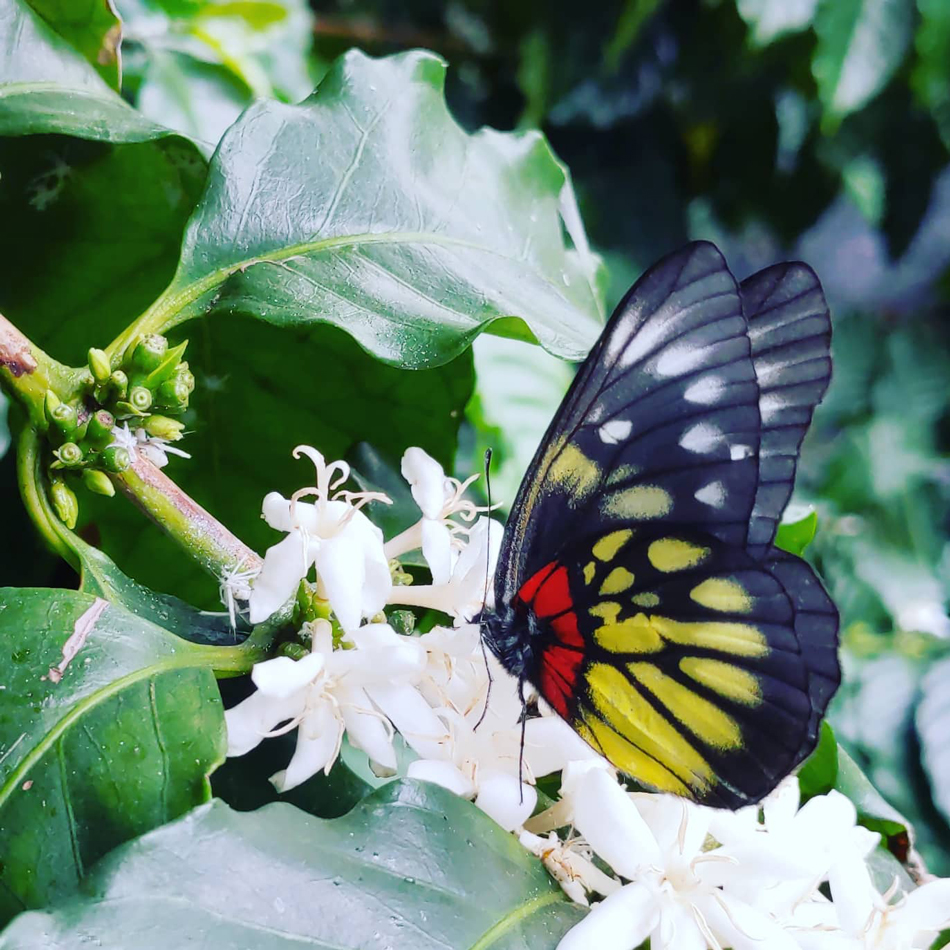
Coffee flowers blossoming in April.
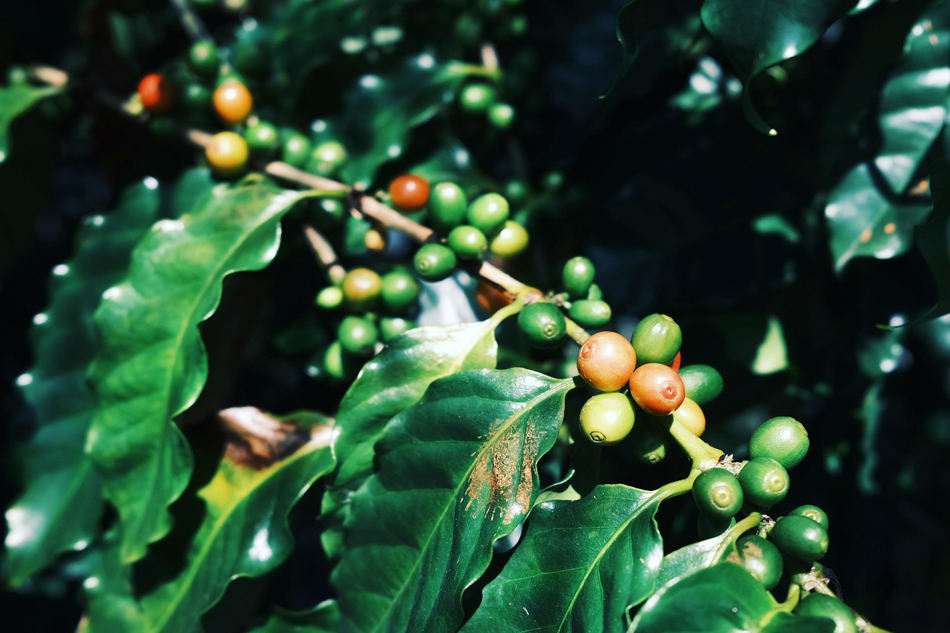
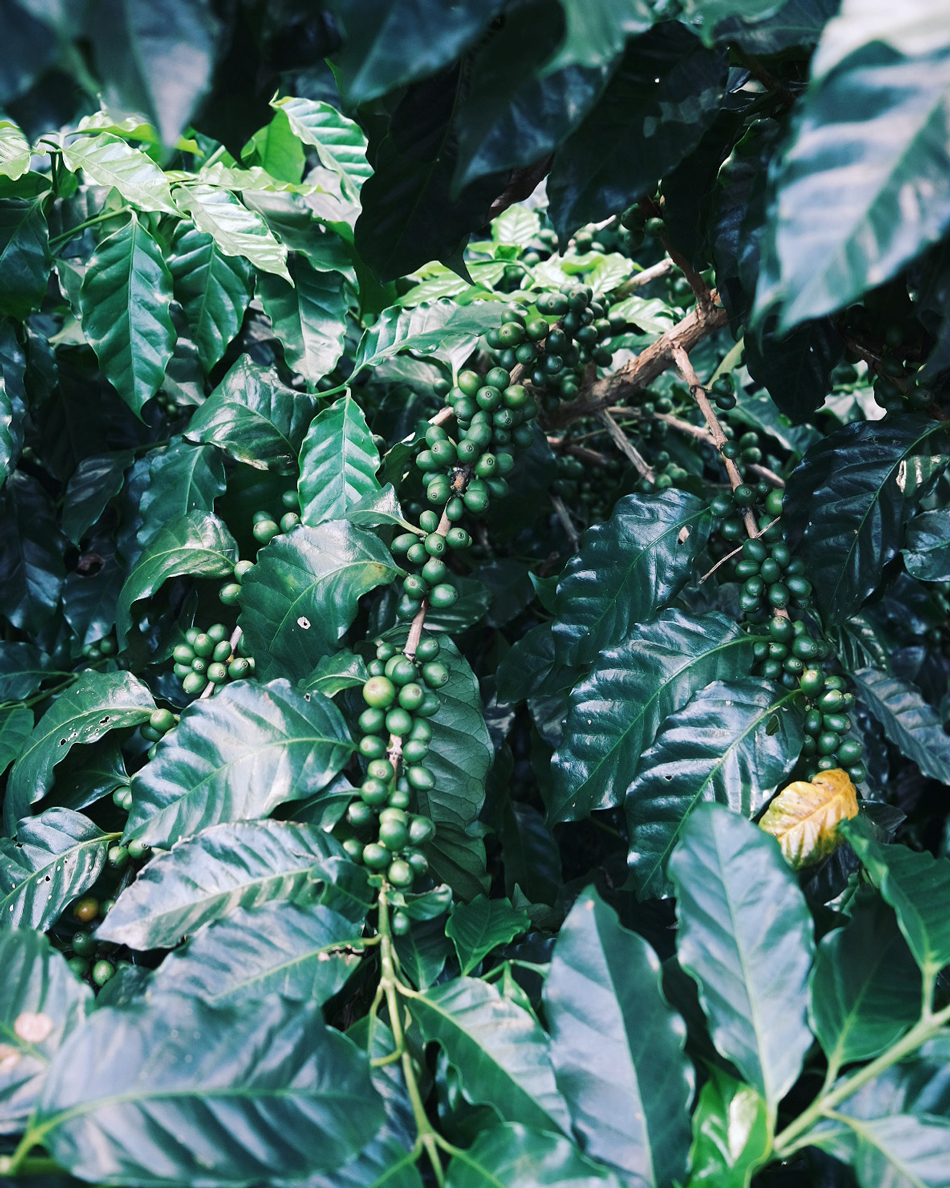
Bearing fruit in summer.
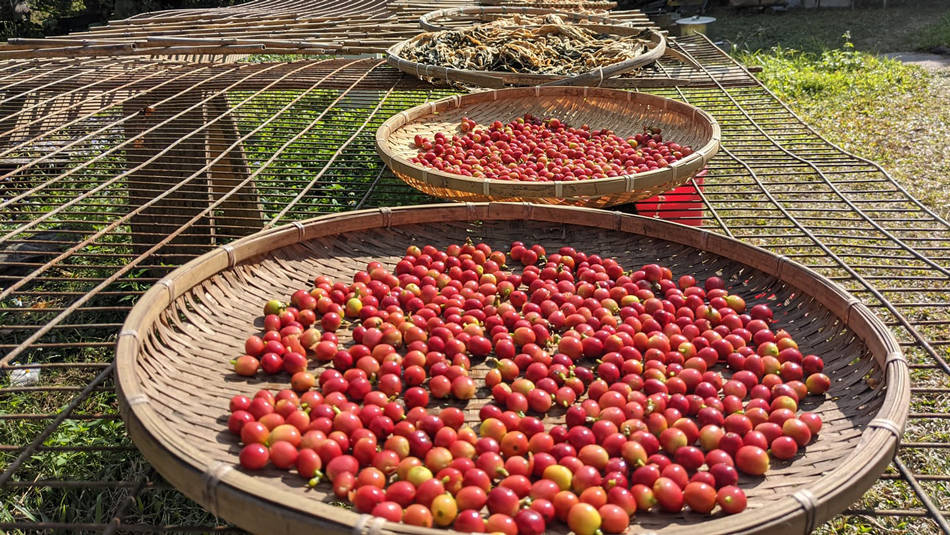
Harvest starts in September, while the busiest time of coffee picking goes on from November till next January.
Apart from cutting weeds regularly, growing Caturra does not require much hard work. "We fertilize them with gourd vines cut off from neighboring fields, basically it does not need extra watering".
Most effort goes to the stage of bean processing after harvest, which is also the most experimental part of the job. Mike teams up with Gary, the roaster from Urban Coffee Roaster; together they would try out various methods to work on the handpicked beans, from the traditional dry, washed and honey processing, to the bolder anaerobic fermentation. Sometimes they would spice up the beans with beer, red wine or even lactobacillus for fermentation, in search of new flavors.
The duo would then pass on the beans to professionals for grading, based on aroma, notes, texture...and find out the most suitable processing method in drawing out the flavor of Hong Kong coffee beans. So far, the washed process seems to work best in showing the character of local beans, scoring 80 out of 100 points in cupping, the minimum grade required to be rated as specialty coffee; this method also works better with local climate, the beans would less likely be ruined, ensuring steady production.
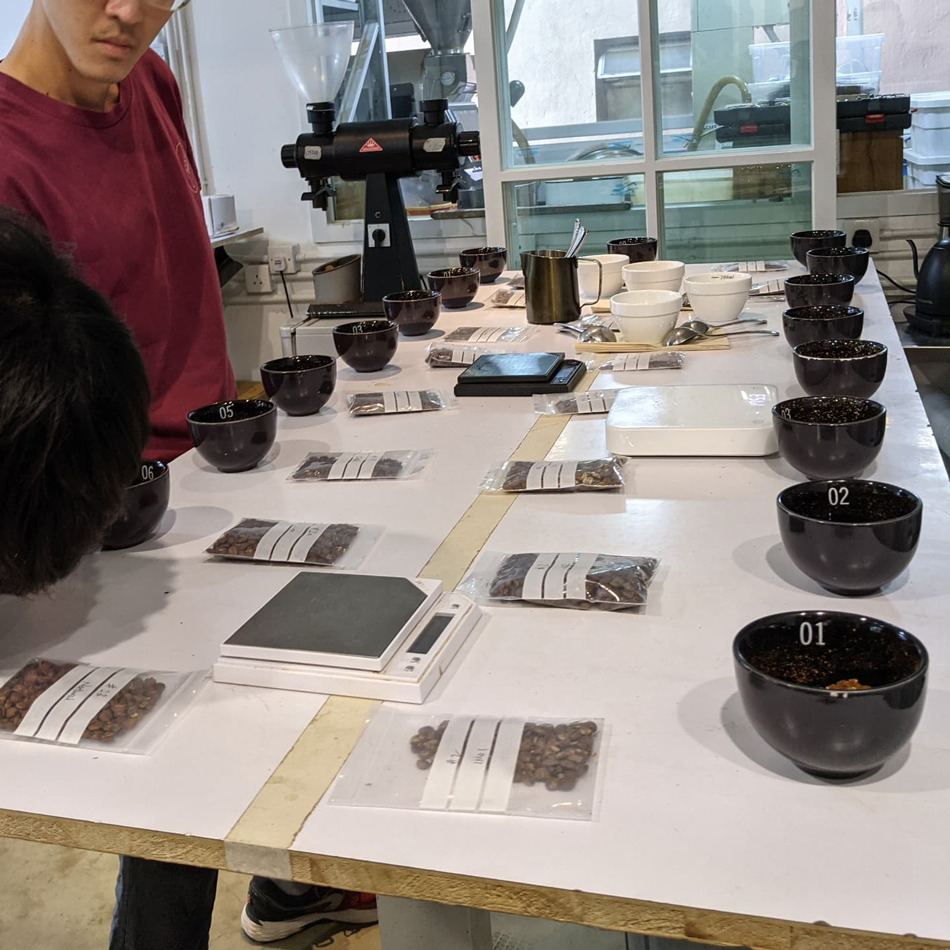
Cupping process of Hong Kong coffee beans
As a farmer, Mike takes a rational and scientific approach of data gathering for his crops, which may have something to do with his profession. Before changing field, Mike was an electronics engineer. He quit last year, took over the coffee field at O-farm and founded "Seed to Cup" --– as new generation farmers are considered minorities, then Mike would definitely be the minority within the minority.
"How should I run a business with just 20 coffeas?" He joked. With his engineering sense, he made a quick calculation, "soon I figured out selling coffee beans would be impossible with such a small field, what's the selling point then?" Eventually, he decided to sell deliver a more extensive and thoughtful experience of tasting coffee — "the journey from seed to cup" — a unique way to enjoy coffee in Hong Kong.
The media dubbed Mike as someone who had "given up big bucks to be a farmer", but he said that's not the point. For him, growing coffee was merely a way break out from his old life, and move on to the next journey; it doesn't necessarily mean he must give up his old career or what he's really good at.
In fact, he spends most of his time not on farming or meeting baristas, but surprisingly, on data research at home.
"Finding a spot to grow vegetables in Hong Kong is hard enough, let alone growing coffee beans... you must know the amount of sunlight, wind direction and humidity of the area, record and study the data, to find the ideal terrain."
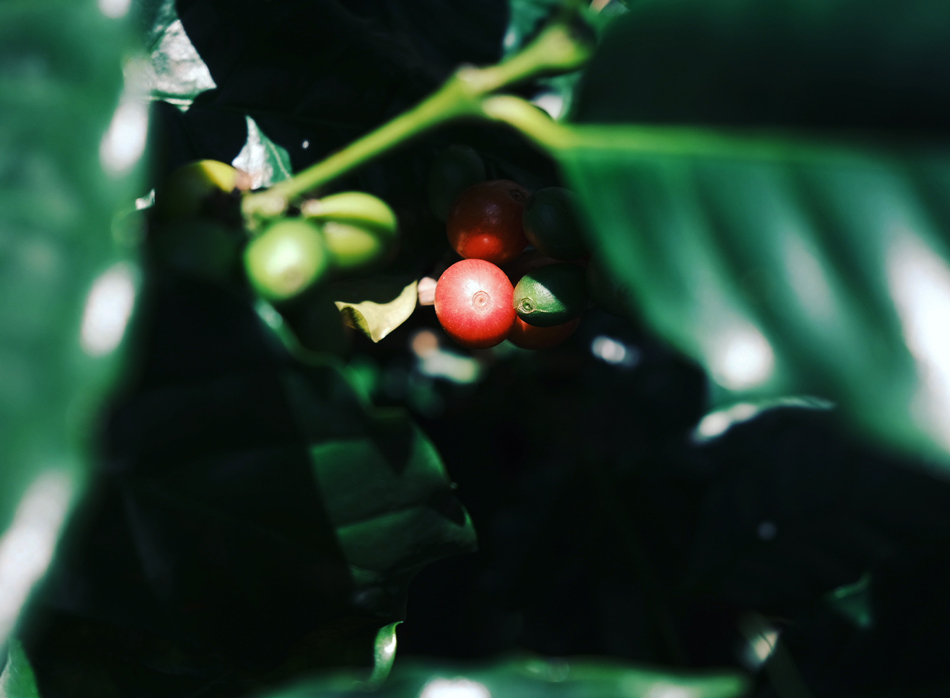
Out of the many interviews he did this year, a reporter made a sudden request: "Could you pose with a hoe for our picture?" Mike smirked at the suggestion, "there are all sorts of farmers out there, coffee farmers just don't look this way".
Right now, Mike's short term goal is to increase productivity, while maintaining a close relationship with coffee roasters and professionals, to form a tight-knit circle of coffee farmers and producers, one linked to another, even influencing each other.
Though bean supply is insufficient for the mass market, Seed to Cup hopes it can stand out with its unique flavor, opening up a new possibility for Hong Kong beans.
"I'd keep on working on this, and see how things would turn out," said Mike in a light tone.
The agricultural experiment from seed to coffee cup is budding, waiting for its day to blossom.

